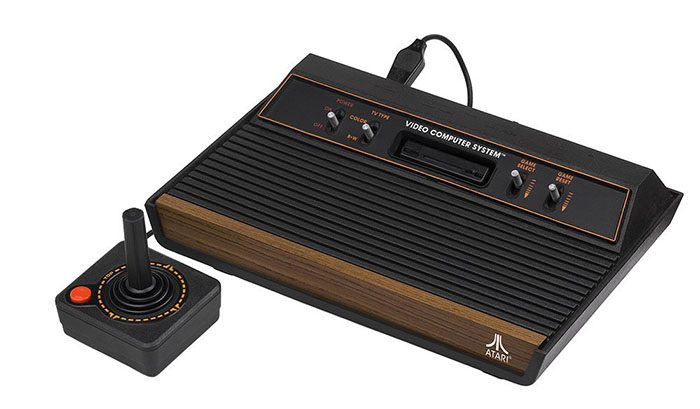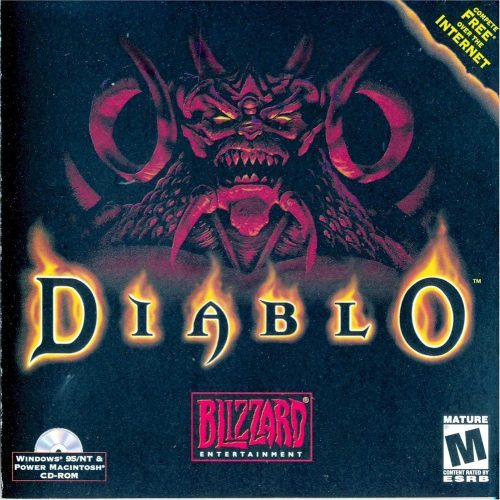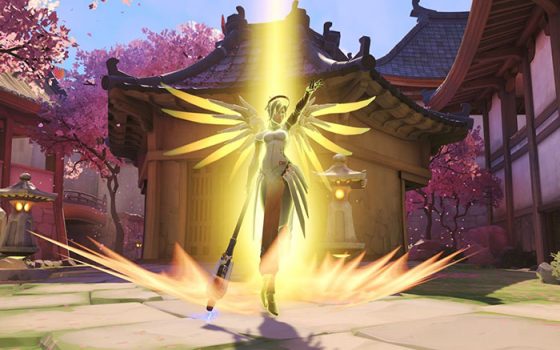

As a follow up to how Japanese gaming has changed the past 35 years, we would like to share how Western gaming has changed in its own distinguishing manner. As stated in that respective Editorial Tuesday, for the longest time, American based companies weren’t that dominant in the console market due to the 1983 video game crash. So how did Western gaming recover from the crash and rise from the ashes? Read today’s Editorial Tuesday to find out!

If there is one market where Western companies such as Blizzard, EA, and id Software made their mark, it was in PC gaming. In fact, the rise of the PC (most notably the Apple II and Commodore 64) in the US is another factor into why consoles such as the Atari 2600 crashed in 1983. They were much more powerful than console hardware and had functions beyond playing games such as balancing your checkbooks, or typing reports so you were getting one machine that could do so much for its time. As PC technology evolved and could become more customizable as opposed to consoles being stuck to their inbuilt hardware, it further expanded and solidified its audience.
While some genres of gaming and computers have always gone hand-in-hand, they weren’t always graphically advanced or have any graphics, to begin with. In the beginning, games were either text or code based. So if you wanted to play chess on the Apple I from 1976, you had to do it in code and the chessboard would be represented in text characters to the point that modern users would probably not want to deal with it. For early RPGs, they were just text oriented. But thanks to advancements in graphical capabilities and the rise of graphical user interfaces from the mid-1980s, visuals became more practical for gaming for that respective medium.

If there is another reason why games Western games have been rising, it is because games that appeal to Western audiences have finally have been increasing in the market. It simply comes down to the differences in tastes of entertainment between Japan and the West. The Japanese love anime based games while Westerners, especially Americans, love something that is more cinematic. This is notably emphasized between Mortal Kombat and Street Fighter, and/or how Western RPGs tend to have more masculine heroes in their thirties while Japanese RPGs tend to use teenagers as their heroes.
Culture and society differences also play some subliminal contribution to it. One notable example is, of course, the Grand Theft Auto series. Many Americans just love being the rebel and just want to stick it to the establishment. Games like Grand Theft Auto allows players to live out that kind of fantasy where you can go all out downtown, but of course, there will be consequences to those actions.
To some people, the fun comes in once the authorities are on your tail and some gamers get a thrill out of it. With first-person shooters, whether you’re for guns or not, nobody can deny that Americans have a different relationship with guns and conflict that brings its own distinct appeal to capture its domestic audience, and easily allows multi-player on many levels whether they be team oriented, or play to the last player standing. While Japanese gamers enjoy single player games mostly due to small living room space in their homes, American homes allow the space for people to get together and enjoy a multi-player game on a weekend, which contributes to the popularity of such games.

As stated before, games like Grand Theft Auto appeal to a Westerner’s imagination in its own way because we live in a society where we are free and encouraged to question authority, while some other societies are understandably taught to respect it. But if there were any game that was sticking it to the man before the rise of GTA, it would certainly have to be Midway’s Mortal Kombat. After Street Fighter II popularized the arcade fighter, Mortal Kombat was released to instant reception for its then groundbreaking graphics and its intense violence. And its violence was hitting the news waves like hot cakes and enraging concerned parents. It became such a controversy to the point that it (along with Night Trap and Doom) became the subject of a bi-partisan American Senate hearing led by Democrat Joe Lieberman of Connecticut and Republican John McCain of Arizona.
The hearings paved way for a rating system similar to that of the Motion Picture Association of America’s, which is still used to this day. Even so, Mortal Kombat continued to be a violent franchise and included Friendships and Babalities as alternatives as a diss to these critics.

Thanks to the widespread availability of high-speed Internet in the US at the dawn of the 21st century, Western gaming quickly found a home for online gaming on many home computers. Many famous Western RPGs instantly went online from Ultima to WarCraft, which were already famous games when they debuted in the 80s and 90s. Even to this day after nearly 15 years, these games still manage to maintain their audience and their servers.
While consoles such as Sega’s Saturn and Dreamcast did have online capabilities, they were released shortly prior to the broadband Internet so the only way to connect them was through a landline and connections back then (if you lived through those times) were tedious. If you were to watch a youtube movie trailer on 56k dial-up, it would probably take HOURS to fully load. While they were released with great intentions, they were just too early for their time.
Thankfully, the inaugural Xbox was released at a time when broadband was catching on and had a library of games that appealed to Western gamers with first-person shooters such as Halo that helped solidify that respective console. While the X-Box and its follow-ups were successes in the US thanks to having games that appealed to American audiences, they were unfortunate failures in Europe and Japan due to not being appealing to the gamers of those regions.
Other famous online games players enjoy are of course the Knights of the Republic, League of Legends, Overwatch, and online versions of Grand Theft Auto. Thanks to modern wireless technology, online gaming is only going to expand to the point that the sky (or bandwidth) is the limit.
While fighting games tournaments such as Evolution have recently gotten some attention, it has actually been around since 1996! Thanks to streaming services, these competitions have progressively been expanding its audience. Now it has come to a point that their coverage has even been recognized by mainstream media sources such as ESPN! Today, many famous eSports competitions also include League of Legends, Call of Duty, and for Starcraft. These competitions are big in the US, Korea, and China to the point that people can win scholarships and/or other cash prizes.
As for why eSports has been having trouble taking off in Japan despite some Japanese players like Daigo Umehara being dominant in Street Fighter games, it is because of anti-gambling and anti-yakuza laws are preventing them from establishing them despite their potential to succeed there.
Naturally, there has been controversy in regards to eSports being classified as a sport and referring to its players as athletes. Considering that a majority of people reasonably recognizes sports to go along the definitions of being physical, and not many can disagree with that argument. As for how Honey feels about that issue, that’s another topic for another Editorial Tuesday. However, we cannot ignore that it is helping the gaming industry gain a new kind of recognition in the media and society.
As for another great reason why Western gaming has managed to make a comeback, it all comes down to thanking good old capitalism and entrepreneurship. While many of the older developers in Japan such as Hideo Kojima, Keiji Inafune, and Yu Suzuki have gone independent in recent years, many young and up and coming developers are starting their own companies from scratch in the US, Canada, and Europe. For starters, thanks to the rise of mobile technology and (relatively) free to use development kits such as the Unreal Engine, it is easier to start a company and develop original content with lesser budgets.
With the assistance of online services such as Xbox Live, Steam, Sony and Nintendo’s stores and social media, it has made self-publishing and advertising much easier, and it ultimately allows developers to have more creative control of their games and keep the profits to themselves. It’s just that younger and newer developers understand their audience and knows how to reach them without the use of an expensive marketing campaign, which then allows them to reach high profits at low costs.
As for why it’s not happening with the present youth of Japan, as we shared in the ET in regards to how Japanese Gaming has changed, it is because, in Japanese society, it is expected for fresh graduates to find lifetime employment as an established company for job security. However, things are changing in Japan because with the birth rate dropping, it will be up to the older developers like Inafune, Kojima, and Suzuki to guide the remaining youth to the future of gaming with their recent actions in encouraging creativity, innovation, and competition.
Final Thoughts
It’s nice to see that Western gaming has come so far from dumping unsold cartridges in a landfill in the Alamogordo desert, to not finding anything on the shelves on holiday season. Americans have proven they have learned from their mistakes and are now even considered a threat by Japanese developers such as Inafune. Maybe it’s because Americans are very forgivable about making mistakes is why it is making a comeback compared to other nations.
In many instances, mistakes and even failures are the best opportunities to learn. Atari ultimately failed because the market was just over saturated with software that anyone could make without Atari’s approval, and some games were just rushed like ET, or just not that great to begin with. Considering how entertainment as a whole has evolved, Western companies have managed to catch onto those changes and accommodate them into today’s gaming, and that is probably one of the biggest reasons why they are succeeding in today’s market.


No comments:
Post a Comment